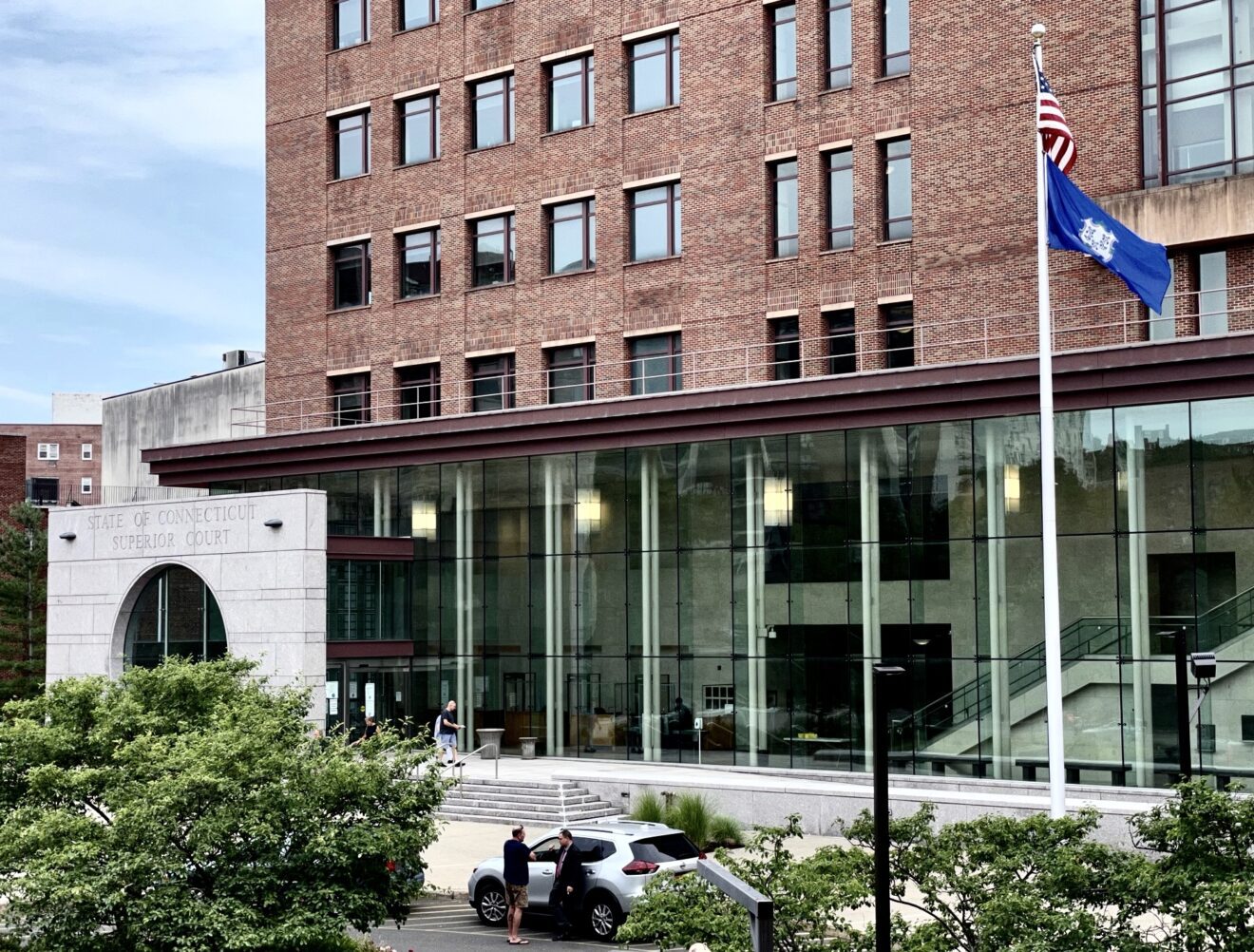The state rested Tuesday in the ballot forgery case of Stamford’s former Democratic Party chief John Mallozzi, whose attorney plans to call witnesses and argue a motion for acquittal Wednesday.
The trial Mallozzi, who was charged with 14 counts each of forgery in the second degree and filing false statements in absentee balloting, is expected to end by Friday.
If found guilty of the Class D felonies, Mallozzi, 71, faces up to five years in prison, or a fine of up to $5,000 per count, or both.
Mallozzi’s attorney, Stephan Seeger, Tuesday continued his two-day attack on the state’s expert witness, Greg Kettering, the retired chief handwriting examiner for the State Police Forensic Lab.
Seeger focused on what Kettering concluded about the allegedly forged absentee ballots individually, and what he concluded about them collectively.
Individually, Kettering found “indications of common authorship that are far from conclusive.” It means evidence is weak that the signatures on each of the questioned ballots were written by Mallozzi, who provided several hundred handwriting samples for Kettering to analyze.
Collectively, however, Kettering concluded the opposite. He testified he is “virtually certain” that, when taken altogether, signatures on the ballots and handwriting samples provided by Mallozzi were authored by the same person.
Kettering testified that he studied each of the 26 submitted ballots for 40 hours.
“I took my time and looked through everything,” Kettering testified. “Once I did that, I started to make my comparisons” to the Mallozzi handwriting samples.
He found that the ballots and the samples had 178 unique “characteristics and habits” in common, Kettering said. It averaged out to 6.8 similarities per ballot, which is enough for him to conclude with certainty that the ballots and samples share common authorship, he said.
Seeger wasn’t having it.
“You came to two different conclusions,” the defense attorney said. “How can that be?”
During a break in the trial, Seeger said he knew of no standard operating procedure that would lead a document examiner to “assign a value to an aggregate.”
“It’s not done in this field,” Seeger said. “I have to make sure there’s a researched, historical basis for how (Kettering) reached his conclusion.”
So, after the break, Seeger asked the judge to allow him to add a last-minute witness to his Wednesday list. Seeger wanted to bring in his own handwriting examiner to clarify practices in the field, such as whether “averaging” similarities in writing samples is valid.
After hearing the objections of Assistant State’s Attorney Laurence Tamaccio, who said a new expert would need many more than 24 hours to review the evidence, Judge Kevin Randolph talked through his ruling on the request.
“Mr. Kettering is testifying as an expert … when an expert is disclosed on the witness list, it typically means the state will rely heavily on expert testimony to prove its case,” Randolph said. “What that expert may say does not preclude the defense from getting his own expert.”
The defense did not do that, Randolph said.
“When you know who your opponent is, prepare for your opponent,” the judge said. “The request is denied.”
After the day’s proceedings, Tamaccio said his office originally sent Kettering 34 questioned absentee ballot applications and Kettering found that 29 appeared to show common authorship.
Kettering then was sent the corresponding 29 inner and outer ballot envelopes and, eventually, Mallozzi’s handwriting samples, Tamaccio said. Among the 29, Kettering determined that handwriting on 26 of the sets – absentee ballot applications plus ballot envelopes – came from the same person, Tamaccio said.
Among the 26 sets of ballot documents, the state’s attorney’s office decided to charge Mallozzi on 14, Tamaccio said. That was based on the voters’ willingness to come forward and other factors, he said.
Prosecutors got the case from the State Elections Enforcement Commission, which first investigated after Stamford registrars of voters filed a complaint about an incident from the 2015 municipal election. A man who went to his polling place was told he could not vote because he’d already cast an absentee ballot.
It turned out that an absentee ballot had been taken out in the man’s name without his knowledge. SEEC investigators said they traced it to Mallozzi, and later determined that Mallozzi was involved in a ballot fraud “scheme” with former Republican Town Clerk Donna Loglisci.
Loglisci is a witness in Mallozzi’s case and has not been charged.
The arrest made regional headlines in part because Mallozzi at the time chaired the Stamford Democratic City Committee and sat on the Democratic State Central Committee. He was arrested in January 2019 after the SEEC’s 20-month investigation.
Tamaccio said he got the case in February of this year. The trial started in July but proceedings were delayed until August because of judges’ vacation schedules.
Seeger told the court that Wednesday he will put his witnesses on the stand and argue for his client to be acquitted of the charges.
The case will not be decided by a jury. Mallozzi chose a bench trial, which means Judge Randolph will render the verdict.

